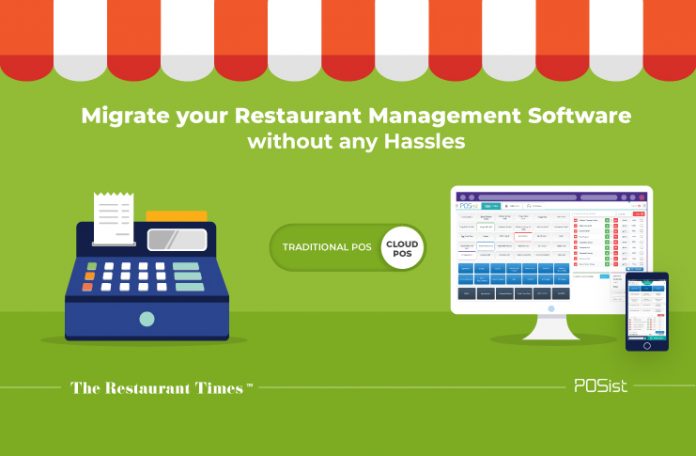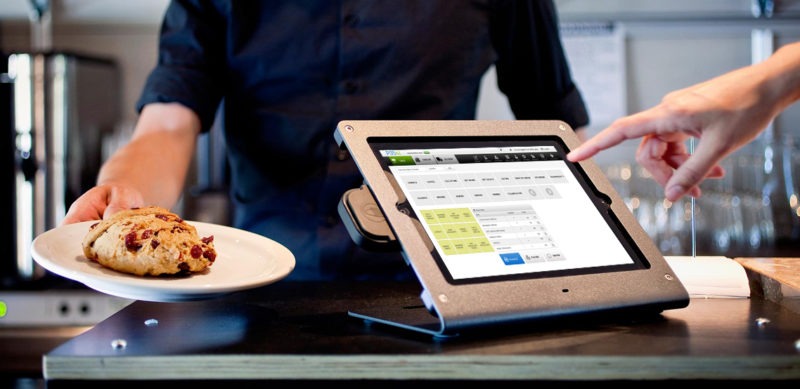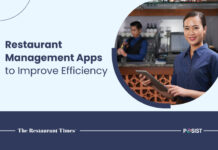Migrating data from a restaurant management software can cause huge problems, if not done properly. One of the significant reasons why restaurateurs fear switching to a new POS is due to a fear of losing critical business data. For operators owning a chain of restaurants, migrating to a new restaurant management software may seem more challenging. However, it does bring a multitude of benefits and simpler ways to run business operations being offered in a new POS system. This article discusses the challenges of POS migration and how foodservice operators in Saudi Arabia can easily migrate data from legacy restaurant management software without hassles.
Effective Tips To Migrate Data From The Restaurant Management Software Without Any Hassles
Switching to a new Point-of-Sale(POS) system comes along with a multitude of benefits. As technology evolves and manufacturers continue to release new and better versions, the ability to simplify restaurant operational processes gets better. This further helps the business to run better and more efficiently. However, most restaurant business owners are reluctant to move to a new POS system because of the challenges mentioned below.
- Fear of Losing data: For a restaurant business, maintaining and recording a database of critical information such as restaurant inventory records, total items sold, customer data and financial data is extremely important. Restaurant operators often fear that this sensitive information may get lost or damaged while switching to a new POS system.
- Delays due to working on a new system: Even though cloud-based restaurant management software has a user-friendly interface that requires minimal training sessions, learning to operate a new POS system requires scheduling time for familiarization that many restaurant businesses cannot afford to give. Therefore, most businesses drop off the choice of not switching to a new POS system.
- Implementation Hassles: Most conventional POS software systems may take 4-7 days to be implemented. That is why, for a lot of restaurateurs, a major concern is the implementation hurdles and a substantial time taken for the new POS system to go live.
When compared to traditional POS software, a cloud-based POS is easy to install. It is not only easier to import data but the set-up phase takes less time than others. Given below are reasons that explain how migrating data between two cloud-based restaurant management software systems is an extremely easy and simple process.
Integrate Massive Data With A Cloud-Based POS
A good cloud-based POS helps you with integrating all your historical data within an hour. The monthly sales and other reports could take a little more time if the architecture of the new POS is different.
It is generally recommended that you first move your data to analytics software provided by Microsoft, Power BI. Another such software to store your data temporarily is Tableau. After moving your data to the software, you can then incorporate it into your POS immediately.
A feature that you should look for in your ideal cloud POS is the ability to check a particular report or to use specific data. In a traditional POS, obtaining data is risky, since you’re dependent on someone else to extract it for you.
Preserve The Data During POS Migration
A lot of restaurateurs live with the myth of losing data during POS migration. This is, however, not the case with an excellent cloud-based POS. You can retain all your previous data and save it for later use. People with a Microsoft license can use up to two instances of Microsoft analytics software for storing their data temporarily.
Tableau and PowerBI are two software that you could use to store your data. The advancement of technology has brought in a complete change in the way people use their POS, a cloud-based POS, therefore, eradicates most of the problems that came with traditional POS.
Provide Staff Training
One of the most important steps of POS migration is efficient POS training for your staff and managers. Without proper training, your regular staff may face difficulties and cause unwanted delays that may ruin the customer experience.
Training for pricing and vendor management can go up to 2 days and then finally could be taken live or implemented across your restaurant. This stands true only for a cloud-based POS, as for a traditional POS, it might take more than 3-4 days for the setting up itself.
Allocate ample time and staffing resources for the migration process. Be sure to clean up and organize your data, and correctly format it before importing into your new system. Even though it may seem difficult to switch from an old POS and migrate to an entirely new POS at your restaurant, with a powerful restaurant management solution, POS migration is only a cakewalk!



















